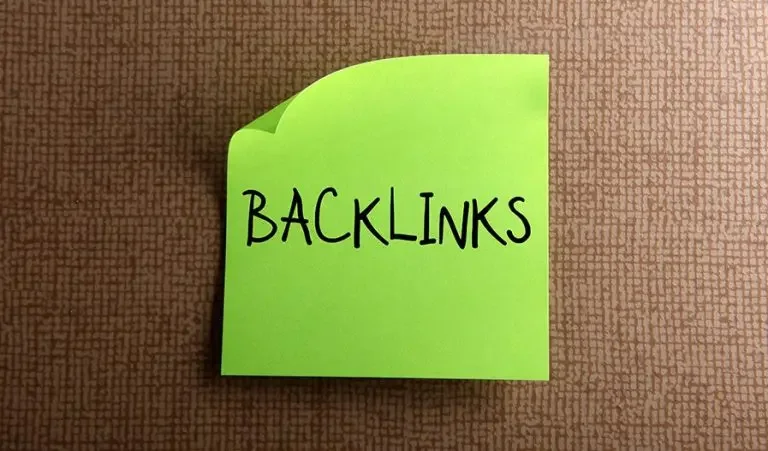As the popularity of WordPress continues to grow, so does the importance of ensuring the security of your website. With numerous security plugins available, it can be challenging to determine the best option for your specific needs. Two popular choices, Sucuri and Wordfence, offer robust features to protect your WordPress website from various threats. In this blog post” Sucuri vs Wordfence: Which is the Best Choice for Your Website “, we will compare Sucuri and Wordfence to help you make an informed decision about which security plugin is the right choice for your website.
Table of Contents
ToggleIntroduction of WordPress Security
WordPress is one of the most popular content management systems (CMS) globally, powering millions of websites. With its popularity, however, comes an increased risk of security threats. Protecting your WordPress website from potential vulnerabilities is crucial to ensure its stability, integrity, and the safety of your data and users.
In this introduction to WordPress security, we will explore the importance of securing your website, common security threats faced by WordPress users, and essential practices to strengthen your website’s security.
Securing Your WordPress Site
WordPress is a widely used content management system, powering millions of websites across the internet. With its popularity, it becomes crucial to prioritize the security of your WordPress site. By implementing the following best practices and essential steps, you can significantly enhance the security of your WordPress website.
1. Keep WordPress Updated
Regularly update your WordPress installation, including the core software, themes, and plugins. Developers frequently release updates that address security vulnerabilities and provide bug fixes. Staying up to date ensures that you have the latest security patches.
2. Use Strong and Unique Passwords
Create strong, complex passwords for all user accounts associated with your WordPress site, including administrators, editors, and contributors. Avoid using common passwords or easily guessable combinations. Additionally, consider using a password manager to securely store and manage your passwords.
3. Secure Hosting Environment
Choose a reputable hosting provider that prioritizes security. Ensure they offer features such as firewalls, intrusion detection systems, and regular backups. A secure hosting environment provides a strong foundation for your WordPress site’s security.
4. Limit Login Attempts- Sucuri vs Wordfence
Implement measures to restrict the number of failed login attempts. This helps prevent brute-force attacks, where hackers attempt to guess your login credentials by trying various username and password combinations. You can use plugins like Login Lockdown or implement custom code to enforce login limits.
5. Implement Two-Factor Authentication (2FA)
Enable two-factor authentication for your WordPress login. With 2FA, users are required to provide an additional verification factor, such as a unique code sent to their mobile device, along with their password. This adds an extra layer of security to prevent unauthorized access.
6. Use Secure Themes and Plugins- Sucuri vs Wordfence
Only install themes and plugins from reputable sources, such as the official WordPress repository or trusted developers. Regularly update them to ensure you have the latest versions, as outdated themes and plugins can become entry points for hackers. Remove any unused themes and plugins to reduce potential vulnerabilities.
7. Regular Backups- Sucuri vs Wordfence

Create regular backups of your WordPress site, including both the files and the database. Store backups in a secure location, either offsite or using a trusted backup service. Regular backups allow you to restore your site to a previous state if it is compromised or experiences data loss.
8. Monitor for Suspicious Activity
Keep an eye on your website’s logs and monitor for any suspicious activity. Consider using security plugins that provide activity monitoring and notifications for unauthorized login attempts or file changes. Early detection of potential security breaches allows for prompt action.
9. Response and Recovery- Sucuri vs Wordfence
Despite implementing security measures, there is still a possibility that your WordPress site may get compromised. In such cases, it’s crucial to have a response and recovery plan in place.
Sucuri vs Wordfence
When it comes to WordPress security plugins, Wordfence and Sucuri are two of the most popular options available. These plugins offer extensive protection against common threats such as brute force attacks, malware infections, and data theft.
As a website owner, it is essential to select a security plugin that effectively safeguards your website while requiring minimal maintenance. Ideally, you want a plugin that is user-friendly and doesn’t demand technical expertise for installation and upkeep.
Sucuri
Sucuri is a leading cybersecurity company that specializes in website security and protection against online threats. With its suite of comprehensive security solutions, Sucuri helps website owners secure their online presence and safeguard against various attacks, including malware infections, DDoS attacks, and website defacement.
Sucuri offers a range of features and services designed to fortify websites and provide peace of mind to website owners. Its core offering includes a powerful website firewall, continuous malware scanning, blacklist monitoring, security incident response, and performance optimization tools.
The Sucuri Website Firewall acts as a protective shield, intercepting malicious traffic and filtering out potential threats before they reach your website. By mitigating Distributed Denial of Service (DDoS) attacks and defending against web application vulnerabilities, the firewall ensures uninterrupted access for legitimate users.
Some key features of Sucuri include:
- Website Firewall: Sucuri’s website firewall acts as a front-line defense, protecting your website from various online threats. It filters out malicious traffic and prevents it from reaching your website, defending against DDoS attacks, and web application vulnerabilities.
- Malware Scanning and Removal: Sucuri provides continuous malware scanning to detect any signs of malicious code or infected files on your website. If malware is detected, Sucuri offers assistance with malware removal and remediation to restore your website’s integrity.
- Blacklist Monitoring: Sucuri monitors search engine blacklists to ensure that your website is not flagged or penalized. It helps maintain your website’s reputation and prevents potential issues with search engine rankings.
- Security Incident Response: In the event of a security incident, Sucuri offers expert security incident response services. Their team of professionals assists you in identifying the root cause of the incident, guiding you through the recovery process, and implementing measures to prevent future breaches.
- Content Delivery Network (CDN): Sucuri’s CDN helps optimize website performance by delivering content quickly to visitors worldwide. By distributing your website’s content across multiple servers, it reduces page load times and improves overall user experience.
Wordfence
Wordfence is a feature-rich security plugin specifically designed for WordPress websites. It offers a comprehensive suite of tools and features to protect your website from various online threats, including malware infections, hacking attempts, and brute-force attacks.
With millions of active installations, Wordfence has gained popularity for its effectiveness in enhancing website security and providing peace of mind to WordPress site owners.
Let’s explore the key aspects and features of Wordfence:
- Firewall Protection: Wordfence incorporates a powerful firewall that acts as a shield against malicious traffic. It actively monitors and filters incoming requests, blocking known attackers, preventing unauthorized access, and defending your website from hacking attempts.
- Malware Scanning and Removal: Wordfence conducts regular malware scans of your WordPress files and database to identify any suspicious code or infected files. If malware is detected, Wordfence provides options to remove the malicious code and restore the integrity of your website.
- Login Security: One of Wordfence’s key features is its robust login security. It offers various measures to protect your website’s login system, including two-factor authentication (2FA), which adds an extra layer of verification to the login process. Additionally, Wordfence monitors and blocks brute-force attacks, limiting the number of failed login attempts.
- Real-time Threat Intelligence: Wordfence constantly gathers and analyzes data from its extensive network of websites to provide real-time threat intelligence. This enables Wordfence to detect and block emerging threats quickly, keeping your website protected against the latest security vulnerabilities.
- Security Scanning and Monitoring: In addition to malware scanning, Wordfence performs comprehensive security scans of your WordPress core files, themes, and plugins. It checks for known vulnerabilities, outdated software, and other security issues, providing recommendations for mitigation.
Ease of Navigation- Sucuri vs Wordfence
When it comes to website security, it’s important to recognize that it is a complex and technically challenging field. In the first category of comparison, we will assess the user-friendliness and ease of use of both plugins.
Wordfence: Ease of Use
Wordfence is designed to be user-friendly and easy to install and configure. Upon installation, you will be prompted to provide an email address to receive security alerts and warnings. You will also need to agree to their Terms of Service.
Once installed, Wordfence provides an onboarding wizard that helps familiarize you with the dashboard. The wizard highlights where security notifications and scan results will be displayed.
During the initial setup, Wordfence enables the website application firewall in learning mode and initiates an automatic scan in the background. Depending on the size of your website, you may or may not receive an email notification when the scan is complete.
Clicking on a notification allows you to view the details and recommended actions related to the notification.
By default, the firewall is configured to run as a WordPress plugin, which may not be the most efficient option. However, you can manually configure Wordfence to run in extended mode for enhanced protection on your computer or laptop.
The basic configuration of the Wordfence plugin is straightforward and requires minimal user input. However, for beginners, locating specific settings or options may be challenging due to a cluttered user interface.
Sucuri: Ease of Use
Sucuri is known for its user-friendly approach to website security. The plugin offers an up-to-date and effective user interface, making it easy to navigate and understand. When Sucuri recommends applying specific security hardening settings, implementing those changes is as simple as a single click.
During the installation process, generating an API key can be done directly from your WordPress administration area, streamlining the setup.
Sucuri automates the majority of its security features, eliminating the need for continuous manual configuration or maintenance. Once you set up the plugin, you can trust that it will continue protecting your website without requiring frequent attention.
In the event of a breach, Sucuri promptly alerts you, ensuring you stay informed about any security issues. However, if you prefer more manual control, Sucuri offers plenty of options to tailor the settings to your preferences. Additionally, since Sucuri’s Web Application Firewall (WAF) is cloud-based, there is no need to worry about performing technical maintenance tasks on your end.
Also Read: WordPress Bloggers Plugins
Security Monitoring and Notifications- Sucuri vs Wordfence
Website owners must be promptly notified if any issues arise with their website. A security breach can result in the loss of customers and revenue. To ensure timely notifications, it is important to verify that your WordPress site can send emails effectively. Utilizing an SMTP service is recommended as it offers the most reliable method for sending WordPress emails. By implementing these measures, you can stay informed about any potential security breaches and take swift action to mitigate risks and protect your website.
Wordfence: Monitoring and Alerts
Wordfence boasts an efficient notification and alerting system. Notifications are prominently displayed next to the Wordfence menu in the WordPress admin sidebar and dashboard, ensuring they catch your attention. The color of the font indicates the severity of the issues detected. By clicking on a notification, you can access detailed information on the issue and the recommended steps to resolve it. It’s important to note that these notifications can only be viewed when you are logged into your WordPress dashboard.
In addition to on-screen notifications, Wordfence also provides immediate email alerts. You can manage email alert preferences in the “Email Alert Preferences” section, located on the Wordfence > All Options page. Here, you have the ability to enable or disable email notifications and specify the severity levels for which you wish to receive email alerts.
With Wordfence’s notification and alerting system, you can stay informed about security issues affecting your WordPress site, whether it’s through on-screen notifications or email alerts, allowing you to promptly address any potential threats.
Also Read: Sucuri- Complete Website Security
Sucuri: Monitoring and Alerts

Sucuri provides important notifications directly on your dashboard, keeping you informed about the status of your WordPress website’s core files. This information is displayed in the top right corner of the screen, dedicated to providing these updates.
Sucuri allows you to specify the email addresses where you want to receive notifications. Furthermore, you have the flexibility to customize email alerts according to your preferences. You can select the specific events for which you want to be notified, set the frequency of alerts per hour, and adjust settings related to brute force attacks, post types, and email subject lines.
In addition to on-dashboard notifications and customizable email alerts, Sucuri’s website application firewall automatically sends high-level alerts to your email address when any issues arise.
With the free Sucuri Security plugin, you can monitor your WordPress website and implement basic security measures to maintain a certain level of safety. However, it’s important to note that this plugin is not designed to protect your website from more advanced and significant cyberattacks.
Also Read: Sucuri Can Help You Fix Your Hacked WordPress Site
Malware Scanner- Sucuri vs Wordfence
Both Wordfence and Sucuri offer comprehensive security scanning features that allow you to scan your WordPress site for malware, modified files, and malicious code. These scans play a crucial role in identifying and addressing potential security threats. Let’s explore a step-by-step guide on how to check the malware scan history and compare the scanning process of both plugins:
Wordfence

- Access your WordPress dashboard and navigate to the Wordfence menu.
- Click on the “Scan” option in the submenu.
- Choose between a Quick Scan or a Full Scan, depending on your preference.
- Initiate the scan by clicking the “Start New Scan” button.
- Wordfence will perform the scan and display a progress bar to indicate the scanning status.
- Once the scan is complete, Wordfence will provide a detailed report of the scan results, highlighting any detected malware, changed files, or other security issues found. Review the report and take appropriate actions based on the findings.
Sucuri
- Log in to your Sucuri account and access the Sucuri Dashboard.
- Look for the “Protection Power” section and click on “Scan Now.”
- Sucuri will start scanning your WordPress site for malware and other potential threats.
- As the scan progresses, Sucuri will display the scan status and estimate the remaining time.
- Once the scan is finished, Sucuri will present a scan report, indicating any identified malware, suspicious activities, or security concerns. Take the time to review the report and follow Sucuri’s recommendations for remediation if necessary.
Also Read: Why Is WordFence Security Plugin The Best
Hacked Website Clean Up- Sucuri vs Wordfence
Restoring hacked WordPress sites can be a challenging task. Malware infections can spread across multiple files, inject malicious links into content, and even lock users out of their own websites. For beginners, it can be especially difficult to manually clean up all the affected files and remove malware.
However, both Wordfence and Sucuri offer valuable services for malware removal and website cleanup. These security plugins provide specialized tools and expertise to assist in the restoration process. With their assistance, users can efficiently clean up their hacked websites and eliminate malware infections.
By utilizing the malware removal and cleanup services provided by Wordfence and Sucuri, website owners can rely on their expertise to tackle complex security issues effectively. This ensures a thorough cleanup process and helps restore the website’s integrity and security.
Also Read: Free WordPress Login Page Security Plugins To Protect Your Site From Hackers
Wordfence
Please note that Wordfence’s site cleanup service is not included in their free or premium plans. It is a separate add-on service available for purchase. When you opt for the site cleanup service, you will also receive a premium Wordfence license that can be used for one website.
The process of malware removal provided by Wordfence is relatively straightforward. They will conduct a thorough scan of your website to identify any malware or infections present. Once identified, they will proceed to remove the malicious code and files from your website.
Additionally, Wordfence’s team will investigate how the hackers gained access to your website, providing you with a comprehensive report on the entire cleanup process. They will also offer recommendations for future preventive measures to help safeguard your website.
The WordPress site cleaning service offered by Wordfence includes the following features:
- Removal of malicious code and links to ensure a clean website.
- Examination of the circumstances surrounding the site’s infection.
- Detailed report on the investigation and infection removal procedures.
- Assistance in requesting the removal of the site from anti-malware and anti-spam blacklists.
- Provision of a checklist to help prevent future attacks.
Sucuri
Sucuri includes website cleanup as part of all their paid plans, offering services such as website cleaning, blacklist removal, SEO spam repair, and Web Application Firewall (WAF) protection. When it comes to malware cleanup, removal of injected spam code, and elimination of backdoor access files, Sucuri is known for its effectiveness.
The process of website cleanup with Sucuri is straightforward. Once you submit a support ticket, their team will initiate the cleanup process. To perform the cleanup, they will require FTP/SSH access and cPanel access, which you can provide using your login credentials. Throughout the procedure, every file they touch is recorded, and automatic backups are created to ensure the safety of your website.
Conclusion on Sucuri vs Wordfence
In conclusion, both Sucuri and Wordfence are reputable WordPress security plugins that offer robust features to protect your website from various online threats.
Wordfence provides comprehensive security measures, including a powerful firewall, malware scanning, login security, and real-time threat intelligence. It offers a user-friendly interface and customizable notifications and alerts. However, certain advanced features and the site cleanup service are available as separate add-ons.
On the other hand, Sucuri is known for its ease of use, effective website firewall, continuous malware scanning, and comprehensive cleanup services included in all paid plans. It offers automated alerts, cloud-based protection, and a user-friendly dashboard. Sucuri’s cleanup process is initiated by their support team, ensuring a thorough restoration of your website’s security.
Interesting Reads:
Starting an Amazon Business: What to Leave to the Experts








